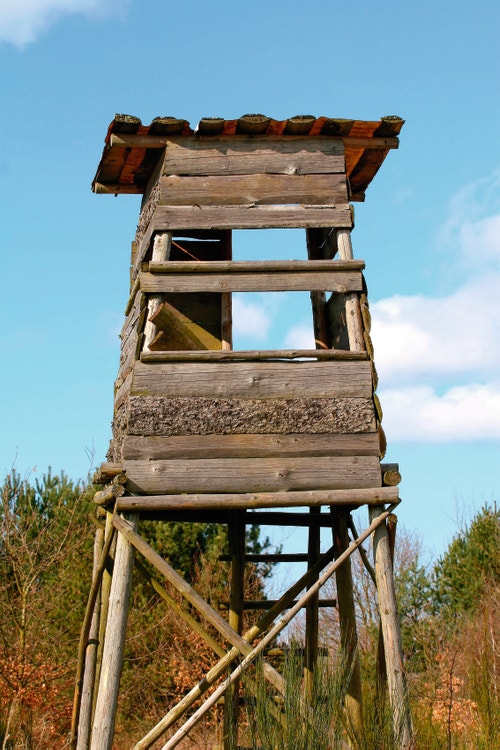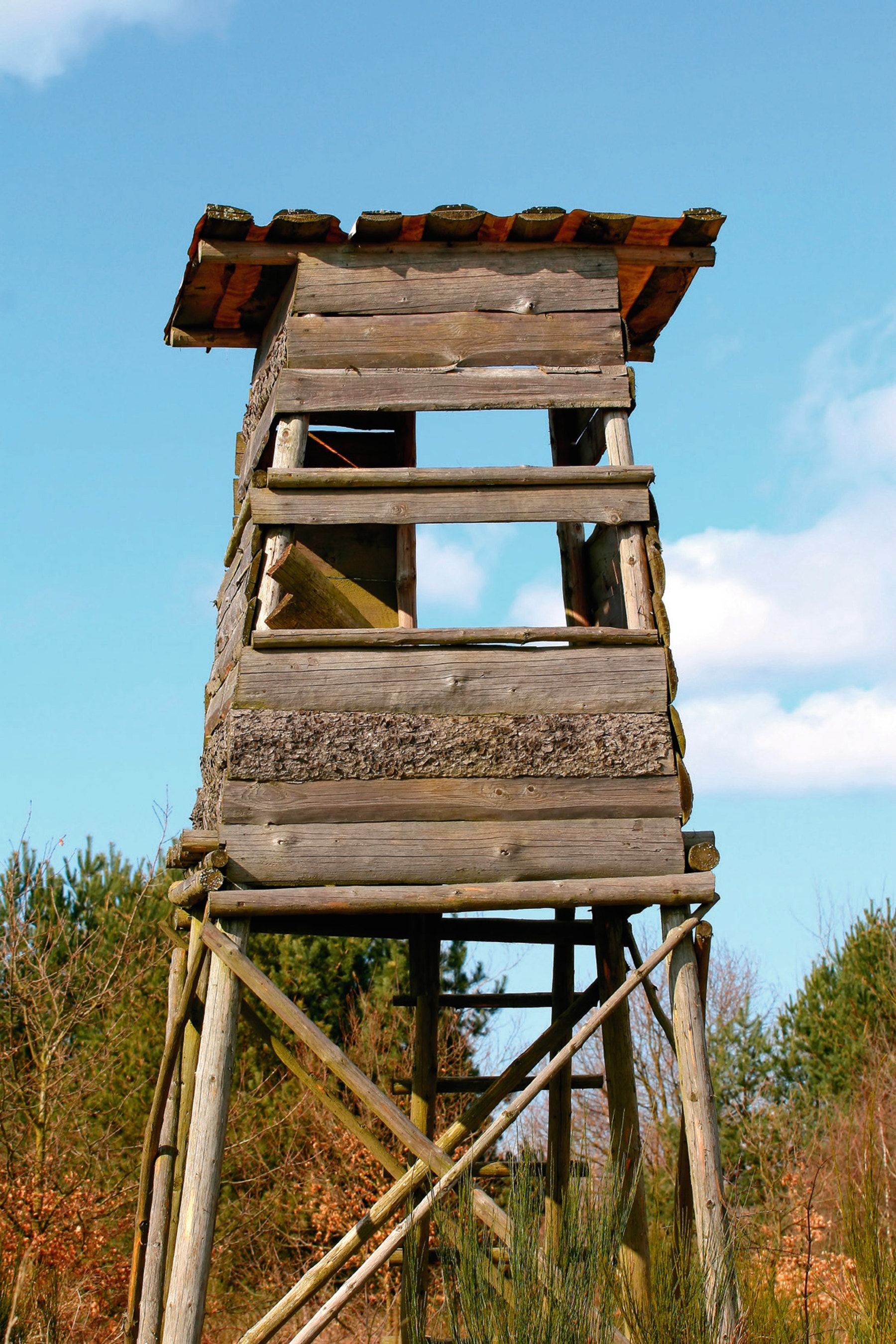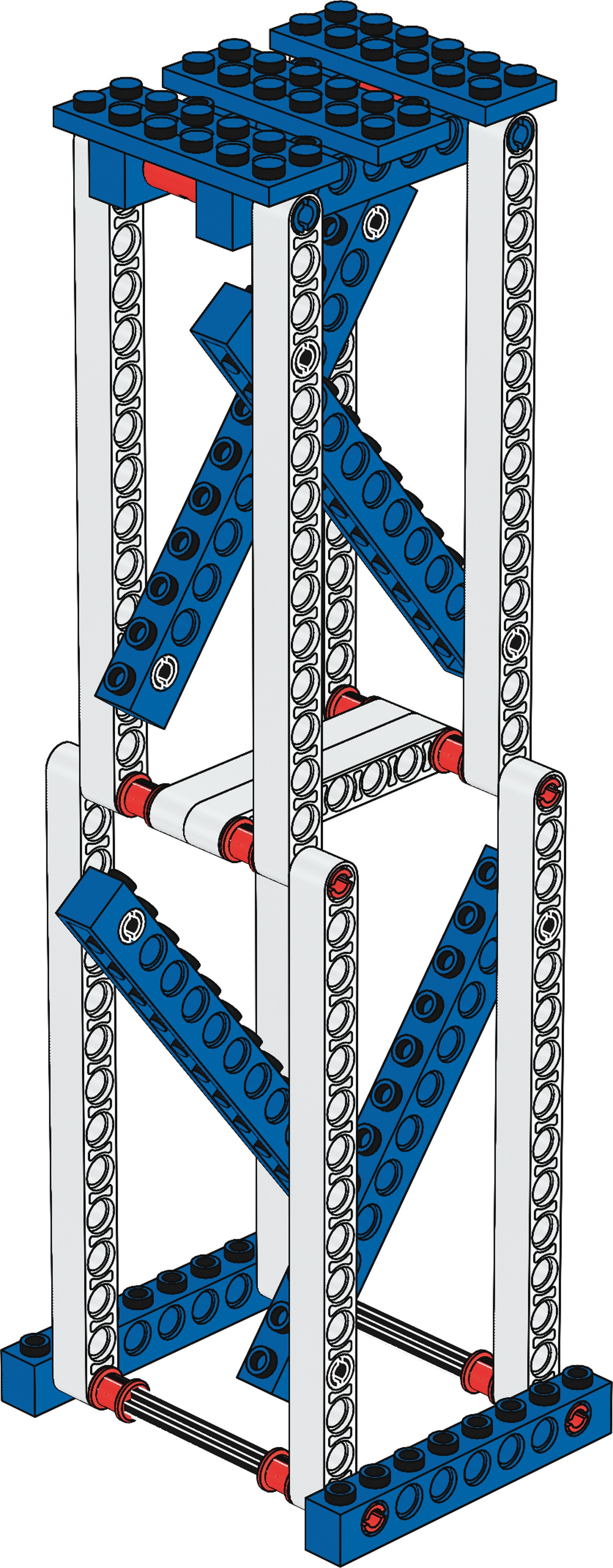Watch Tower
Apply knowledge and skills related to simple machines, structures, engineering, stability, performance, and fair testing.

The Problem
(3-5 Minutes)
Ornithologists study birds in the wild. They need to be in a comfortable place protected from the wind and weather. These places are often called hides because it is here that the ornithologists ‘hide way’ from the birds so that although they can see the birds the birds cannot see them and so behave naturally. Usually the ornithologists need to be up high to observe the birds in which case they need a watch tower with the hide at the top.

Design Brief
(3-5 Minutes)
Your task is to design and build a stabile watch tower suitable for bird watching that is as tall as possible.
Motivation
To help in the design process, instruct the students to look at the picture on the front of the unit and read the accompanying text. Alternatively, let the students search the Internet to learn more about the appearance, structure and function of different sorts of watch towers and hides are used by ornithologists in different parts of the world. Discuss the constraints and functions they will have to take into account.
Suggested Model Solution
Note: You are advised not to share this image with students.

Fair Testing and Fun
(15-20 Minutes)
While the activity is in progress, encourage the students to relate their knowledge, skills and understanding to the task at hand by asking:
How will your watch tower work? What different sorts of parts will you need?
How will you ensure that the structure to support the hide is strong?
How will you ensure that the structure to support the hide is stable?
How will you ensure that the structure to support the hide does not sway in the wind?
How will the ornithologists reach the hide?
How will the ornithologists get their equipment into the hide?
How will you ensure that the hide and watch tower blend into the surroundings?
When the activity is almost finished, encourage the students to reflect on both the product that they have produced and the processes they have used by encouraging the students to:
Carry out tests to evaluate the performance of the watch tower:
- How well does it protect those in the hide?
- How easy is it to use?
- How well does it blend into the background?
- How safe is it?
Record their design by drawing it or taking digital photos of it.
Add notes describing the way the model works and how this might be improved to get better performance.
Describe how to ensure safe use of the model.
Write briefly on what went well in their design task and what they could have done to improve it.
Teacher Support
Students will be able to apply the knowledge and skills of:
Simple machines, mechanisms and structures
Engineering design
Communicating and team working
Applying principles of safety and product reliability
9686 Simple & Powered Machines Set (two students per set recommended)
Materials for camouflage
Materials to ensure safety e.g. gate, ladder, barrier, lights
Crosscutting Concepts
Cause and effect: Mechanism and explanation
Systems and system models
Structure and Function
Stability and change
Science and Engineering Practices
Asking questions and Defining Problems
Developing and using models
Planning and carrying out investigations
Analyzing and interpreting data
Using mathematics, Informational and Computer Technology, and computational thinking
Constructing explanations and designing solutions
Engaging in argument from evidence
Obtaining, evaluating, and communicating information
Common Core Mathematics Standards
MP4 / 7.EE.B
Common Core English Language Arts
SL 6.1 / SL 6.4 / SL 6.6 / SL 7.1 / SL 7.4 / SL 8.1 / SL 8.4 / SL 8.6
RST 6-8.1 / RST 6-8.2 / RST 6-8.3 / RST 6-8.4 / RST 6-8.5 / RST 6-8.10
WHST 6-8.2 / WHST 6-8.4
Student Material
Share with:
 Google Classroom
Google Classroom